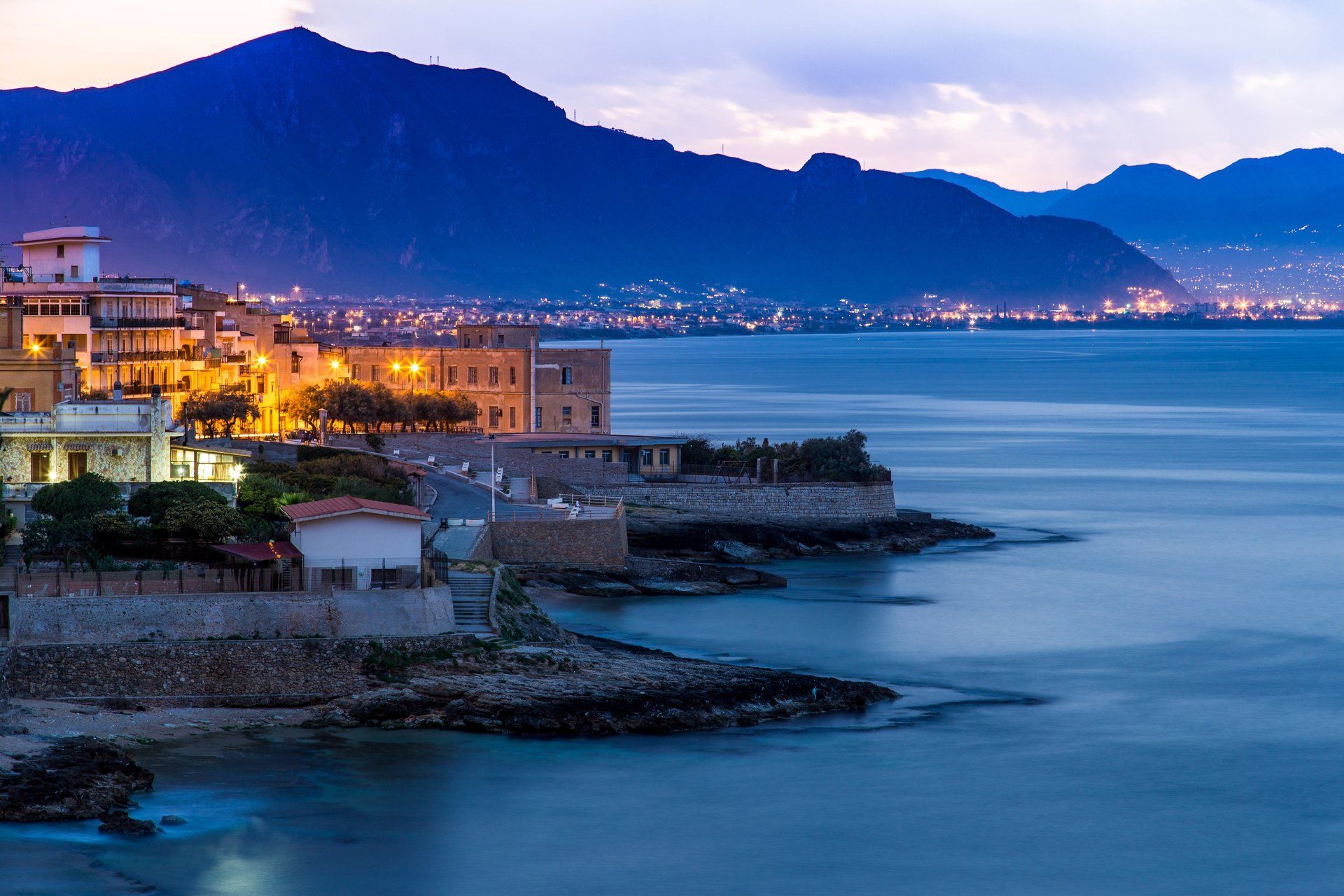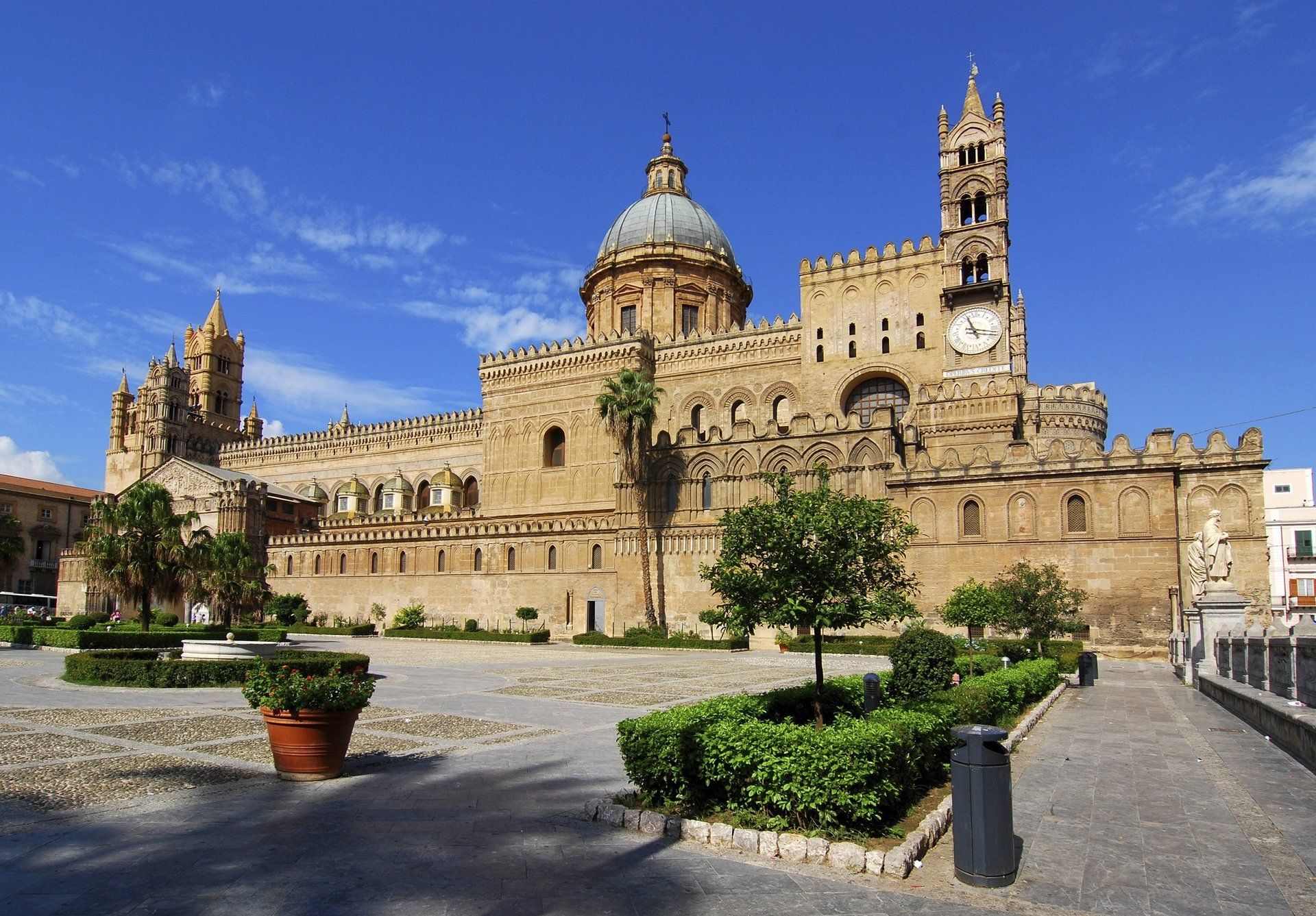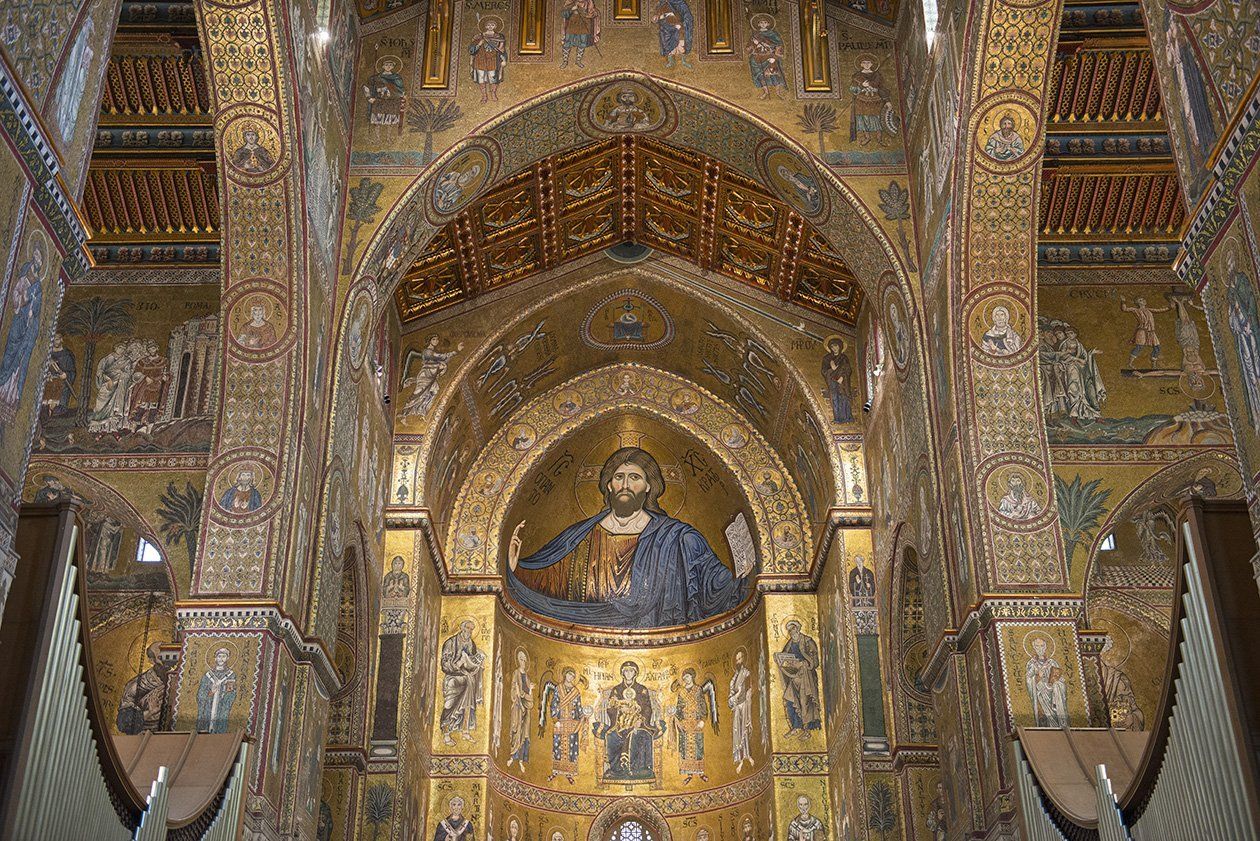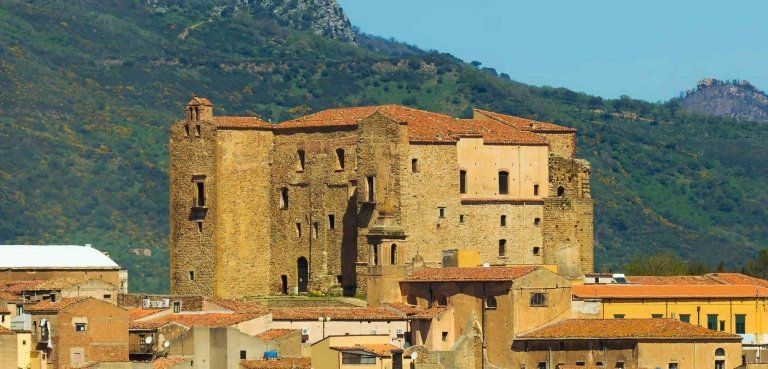Tours in Palermo
Located in the western part of Sicily on the Tyrrhenian Sea, Palermo is an eclectic city with a thousand faces.
The majestic cathedral is a symbol of the various dominions that held power in the city over the centuries. Architectural elements combined with art.
Palermo is divided into various neighbourhoods, that are distinguished by their particular features La Kalsa, Il Capo, L'Albergheria and the world-famous Vucciria market.
Tours in Monreale
Located on the slopes of Mount Caputo at 310 metres above sea level, the town of Monreale towers over what were once the beautiful citrus groves of the Conca d'Oro and the city of Palermo.
Starting with the architectural complex of the Benedictine monastery - including the magnificent Cathedral - the town was built essentially for political reasons, in a prestigious location that ensured its inhabitants' security and defence, as well as symbolic domination of the valley.
Monreale is famous the world over for its majestic Cathedral.
It is a pre-eminent example of Norman architecture in Sicily: combining classical elements with the Nordic style, interpreted by Arab and Byzantine workers who still populated the island at the time and who worked diligently on the monument.
Tours in Cefalù
Cefalù is located on the northern coast of Sicily, around 70 km from Palermo at the foot of the rocky headland. It forms part of the Park of the Madonie and is a member of the elite club of the most beautiful towns in Italy, the organization of small Italian towns that stand out for their artistic, cultural and historical significance.
The city's cathedral was declared a UNESCO World Heritage Site in 2015.
The historic centre of Cefalù features a medieval layout, with a network of narrow streets paved with beach pebbles and limestone from the Rock of Cefalù.
Castelbuono
Located in the valleys of the Madoniein the province of Palermo, was originally built as a palace in 1316 for Count Francesco I of Ventimiglia. It was built on the site of an earlier fortification on San Pietro Hill. In the 14th century, a whole town had grown up around this castle.
With the Arab-Norman and Swabian architectural styles, this castle was built with three floors.
The most interesting place of the castle is probably the chapel which was restored in 1683 and is dedicated to St. Anna. Richly decorated in the baroque style with precious marble and cherubs, the chapel has a beautiful urn containing the skull of the saint.
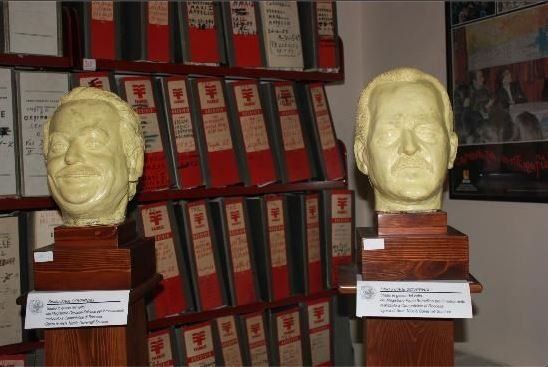
Corleone and the Museo della Mafia
"Godfather" Tour - Il Padrino
The Museo della Mafia was opened on 12 December 2000 before the highest authorities of the state, including Carlo Azeglio Ciampi, then President of the Republic, and Pino Arlacchi, Vice-Secretary General of the United Nations representing on behalf of the Secretary-General Kofi Annan.










